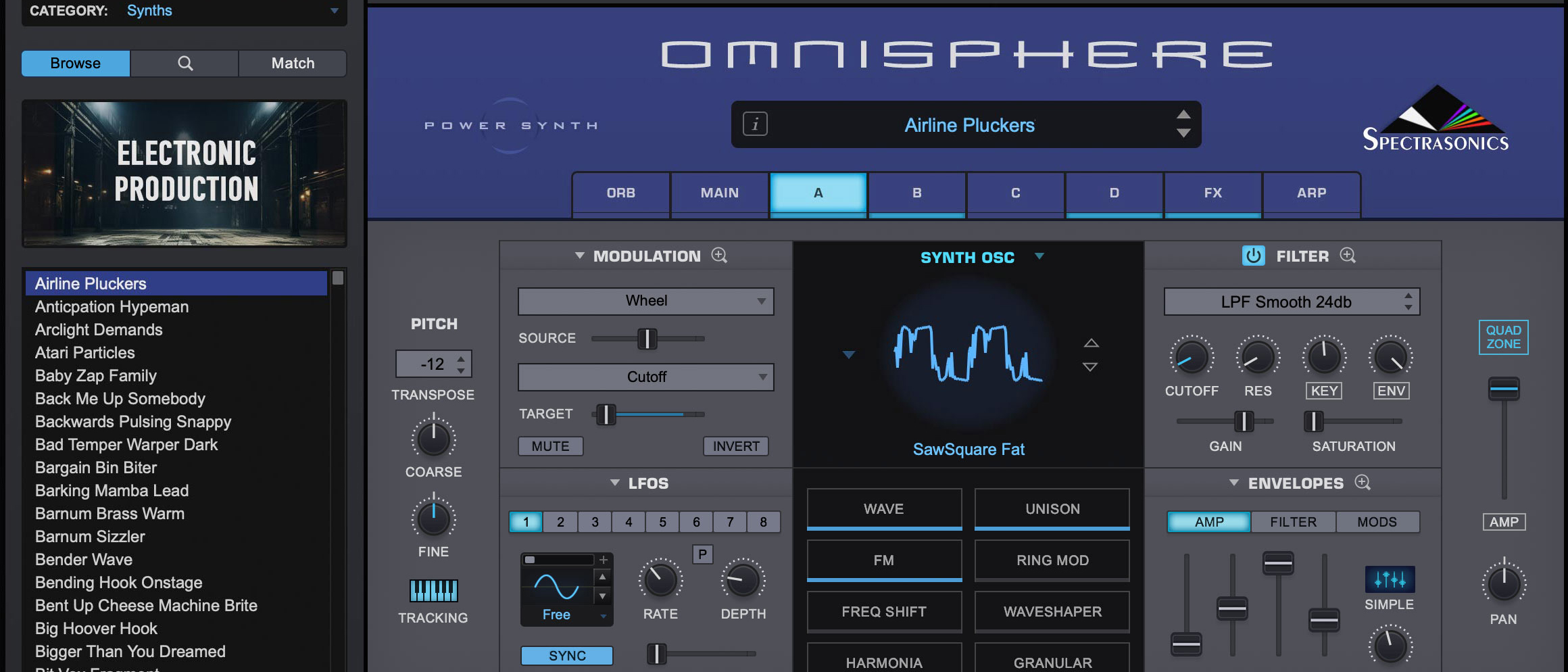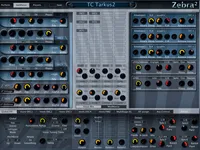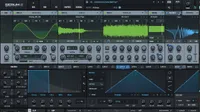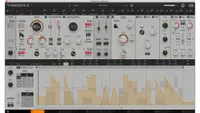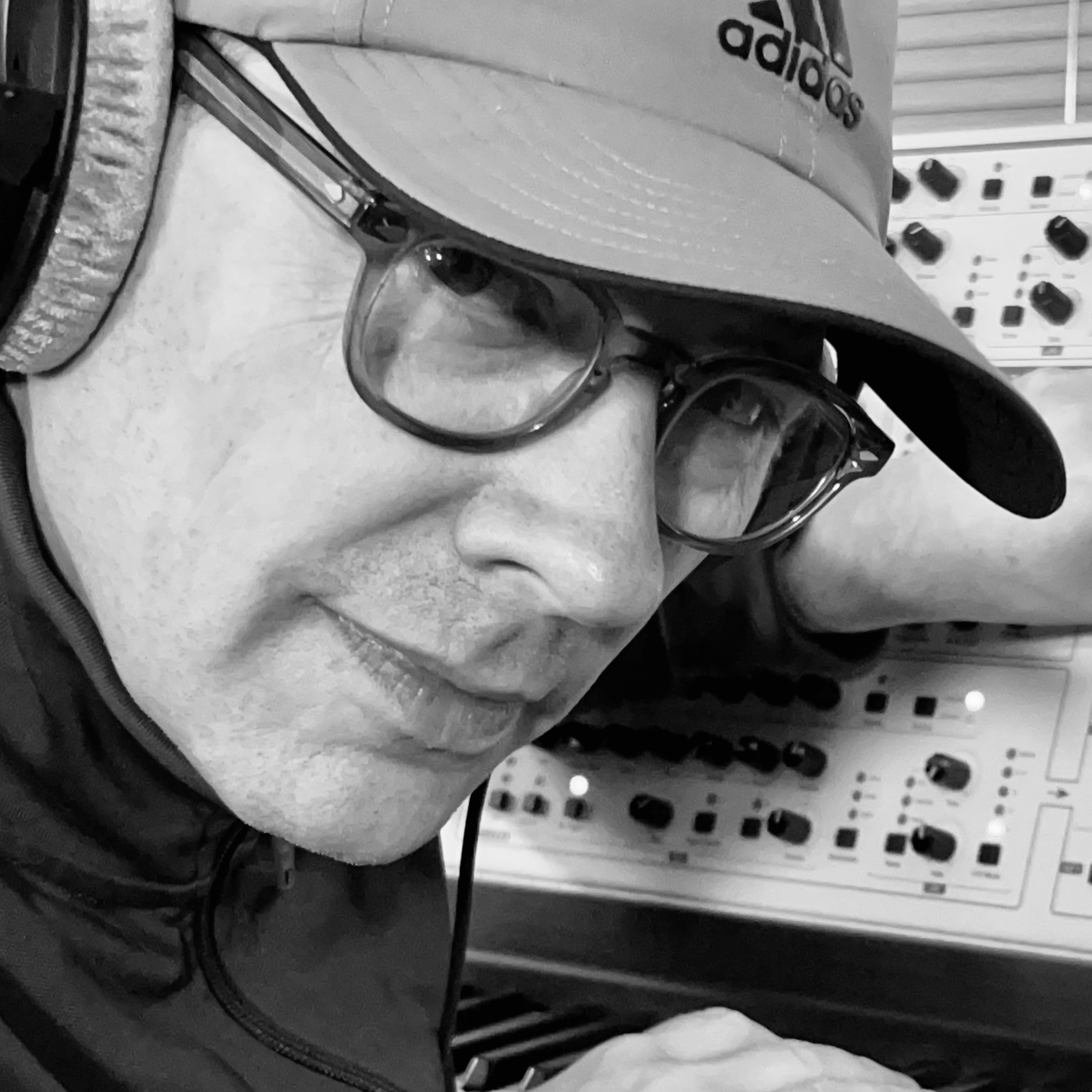MusicRadar Verdict
No matter what style of music you produce, Omnisphere 3 is one of the most unique, stylish and feature-packed workhorses available. It could be the only synth package you really need, and whenever you use it, it will lift and inspire your creativity and output.
Pros
- +
It sounds exceptional, building on previous sonic strengths, with plenty more of everything!
- +
Great new features and really usable enhancements.
- +
New curated sound libraries, allowing quicker access to the sounds you need.
- +
MPE compatibility and expanded hardware control features.
Cons
- -
It’s at the upper end, price-wise, but it is vast, and very, very good!
- -
Dear Spectrasonics, please don’t forget about updating Stylus RMX!
MusicRadar's got your back
What is it?
When it comes to production tools, there are a select few notable and highly regarded companies, many of which have roots in the traditions and early days of music technology. These brands are mostly linked with desirable hardware, rather than software, but there is one notable exception – Spectrasonics.
As any user of its products will tell you, their content is consistently a cut above. Under the guidance of creative director Eric Persing, the brand's ideology always begins with great sounds. Eric was chief sound designer for Roland between 1984-2004, during which time he developed the Spectrasonics brand through a series of exceptional sampling CDs, which ultimately migrated to a line of virtual instruments.
Initially, these were very focused, embracing rhythmic loops, bass sounds and pad-like instruments. This last element, originally known as Atmosphere, was the seed that morphed into Omnisphere, quickly embracing other elements, while providing an exceptionally powerful synthesizer, packed full of sonic content in both modelled and sampled form. Omnisphere quickly became one of the must-have tools for music production and composition, infiltrating every corner of the music and media industries.
In typical Spectrasonics fashion, version 3 of Omnisphere was quietly and unexpectedly announced, leaving it to the musicians and producers to make all the noise, but does it live up to its reputation, particularly now that many other companies have attempted to catch up?
We could answer this question succinctly with a simple “yes”, but that’s not so helpful if you are already in the Omnisphere camp and questioning the value of an upgrade, so let’s start with the sounds...
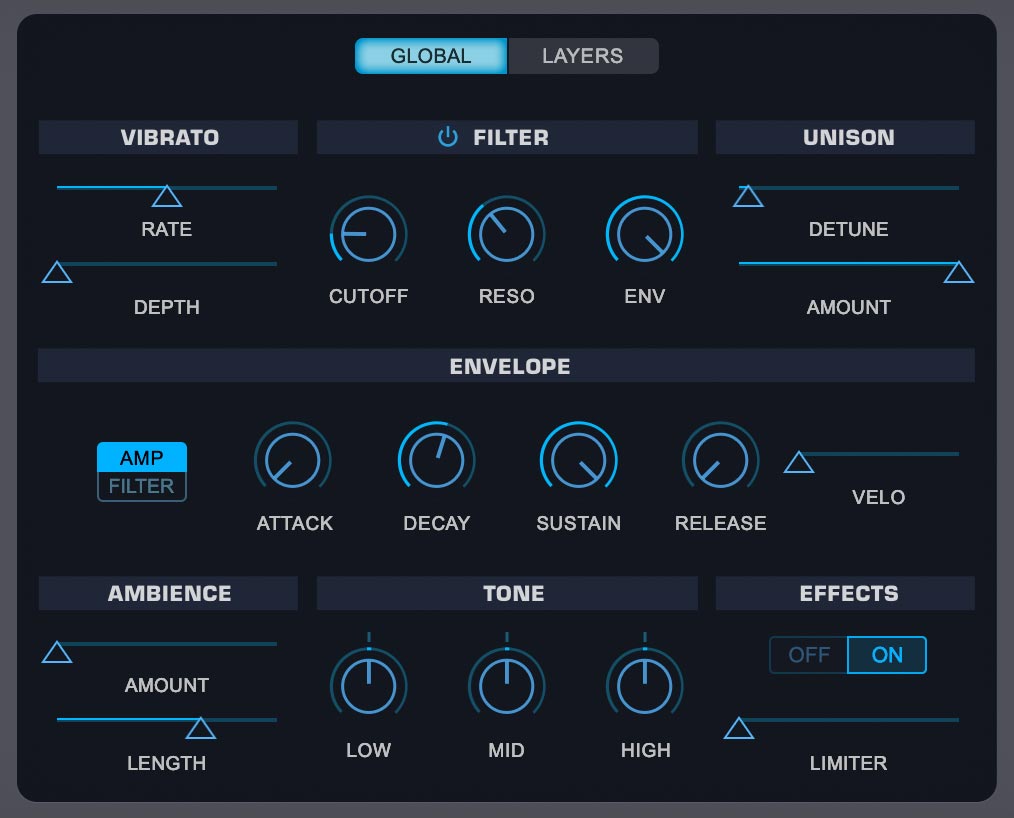
Performance
Omnisphere has always grown in size with each revision, supplying sonic content which is both usable and sonically surprising. There have been some fantastic audio examples over the years, emanating from the global Spectrasonics sound design team; the burning Piano (yes, literally), hang drums, samples and waveforms that hark back to the analogue classics, and through expansion, a multitude of exceptional pianistic and bass sounds, or even the Twisted Trees sonic extension library, where all the sounds are generated by wood!
Omnisphere 3 still packs around 64GB of library content, which is roughly the same as it was before, but thanks to some clever under-the-hood compression, there is now more content – loads more content! In total, there are over 41,000 patches, of which over 26,000 are new. We are rounding these numbers down slightly, because Spectrasonics has a tendency to add patches, even alongside the smallest of upgrade tweaks, so these figures could well change in the near future, but always rising.
Want all the hottest music and gear news, reviews, deals, features and more, direct to your inbox? Sign up here.
With so much in the sonic arsenal, it’s sometimes challenging to get off the musical blocks, but with an effective new idea, Spectrasonics has implemented 18 new ‘Collections’ as a form of sound categorisation. These groupings are still extensive, but it’s far easier to locate what you need, with graphics and menus to guide your path. Categories include Electronic Production, Analog Vibes, Scoring Organic, Ambient Dreams, and so it goes on, with each category divided by a hierarchical menu, guiding you to your desired flavour of instrument. It’s quick and useful, making it exceptionally easy to just start writing music, although it has to be pointed out that many of the patches are so inspiring that they are likely to guide your path creatively too.
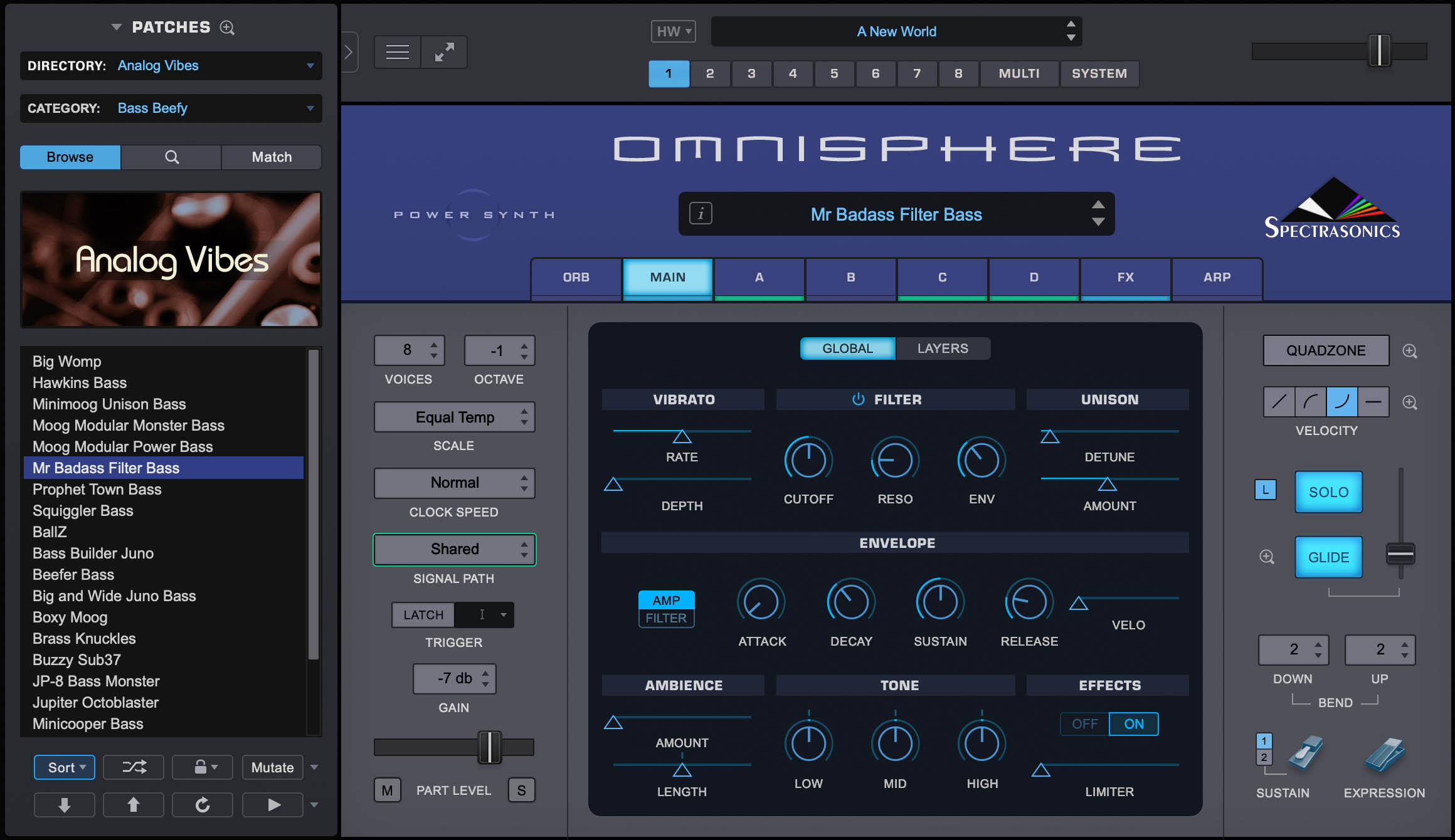
In common with Omnisphere 2, patches can contain anything from one to four layers. These are not so much partials as standalone synth layers, which can be combined to create an overall texture. In previous versions, it has sometimes been difficult to access global control easily, but this has been thoroughly addressed with a makeover of the main page. Immediate addressing of the basics is now available, such as filter settings and envelope modulation. The new-look graphics are crisp and clear, and feel neat and contemporary. The parameter pots and faders are also sensibly-sized, with clear descriptions, which makes editing all the easier.
There are further visual enhancements, such as the green line, which underscores each synth layer. This line indicates that the layer is being employed, and while it’s a small visual detail, it makes editing and usage so much clearer.
During installation, Omnisphere 3 overwrites any previous versions, but fear not, it is fully backward compatible. All previous content is still available, with older patches and user content finding its way to new menus. In our extensive testing, we found that older projects loaded and played exactly as they should do, even down to multi audio routings. Phew!
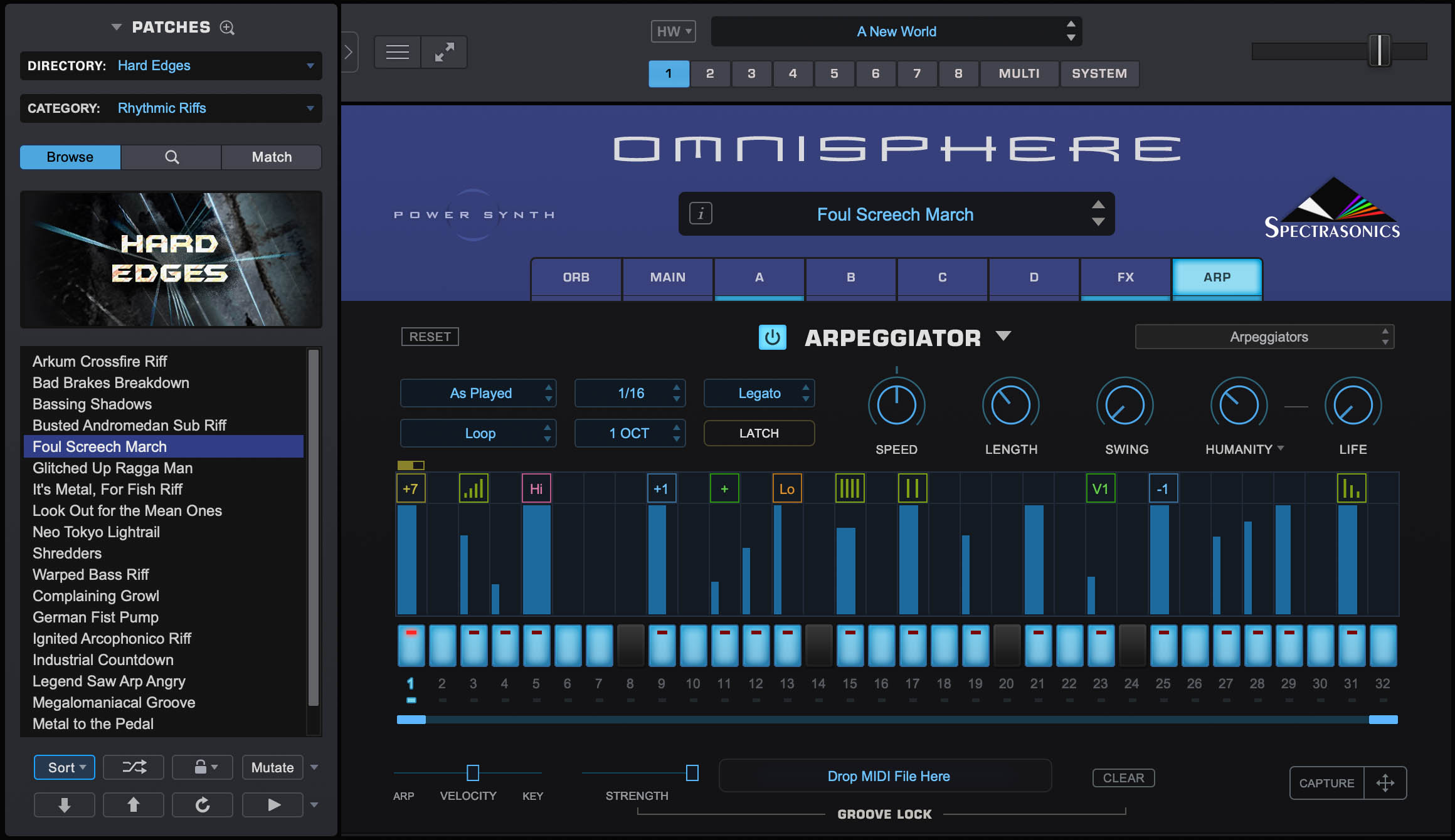
41,000 and rising!
With so many preset patches available, we could literally spend the entire review waxing lyrical about these alone, but suffice to say, the sonic output is incredibly impressive, which we all could have predicted. There is abundant complexity and movement that can be automated or controlled from elements such as mod wheels. The electronic sounds can sometimes sound overwhelmingly stylised, but they are classy, and if this is something you need regularly, you will not be disappointed.
At the more organic end, there is a wealth of acoustic content, which now extends to a greater number of more acoustic string patches. Once again, these are quite stylised, and by no means a replacement for full-on string sample libraries, which offer greater realism. You can craft a string ensemble part very quickly, and we found that by blending other sample libraries alongside, we created a beautiful tapestry. Realism, with true sonic depth!
Interestingly, there is now a large contingent of percussive content, particularly with commercial production and soundtrack composers in mind. Large acoustic drums and booms reside alongside commercial drum sounds, which include the usual 808/909 classics and modern hybrid variations. It does make us wonder whether the next revision of Stylus RMX may infiltrate the Omnisphere realm, but we are merely speculating! (Soon, please guys, soon?!)
It has always been the case that so many of Omnisphere’s patches are so good, they become highly identifiable, particularly in the soundtrack world. Possibly with this in mind, Omnisphere is equipped with a new Mutations feature, which provides a roll of the dice, introducing deviations to your selected patch. Moreover, you can continue to do this as many times as you like, with each new iteration of sound appearing in a saved list, ripe for recall.
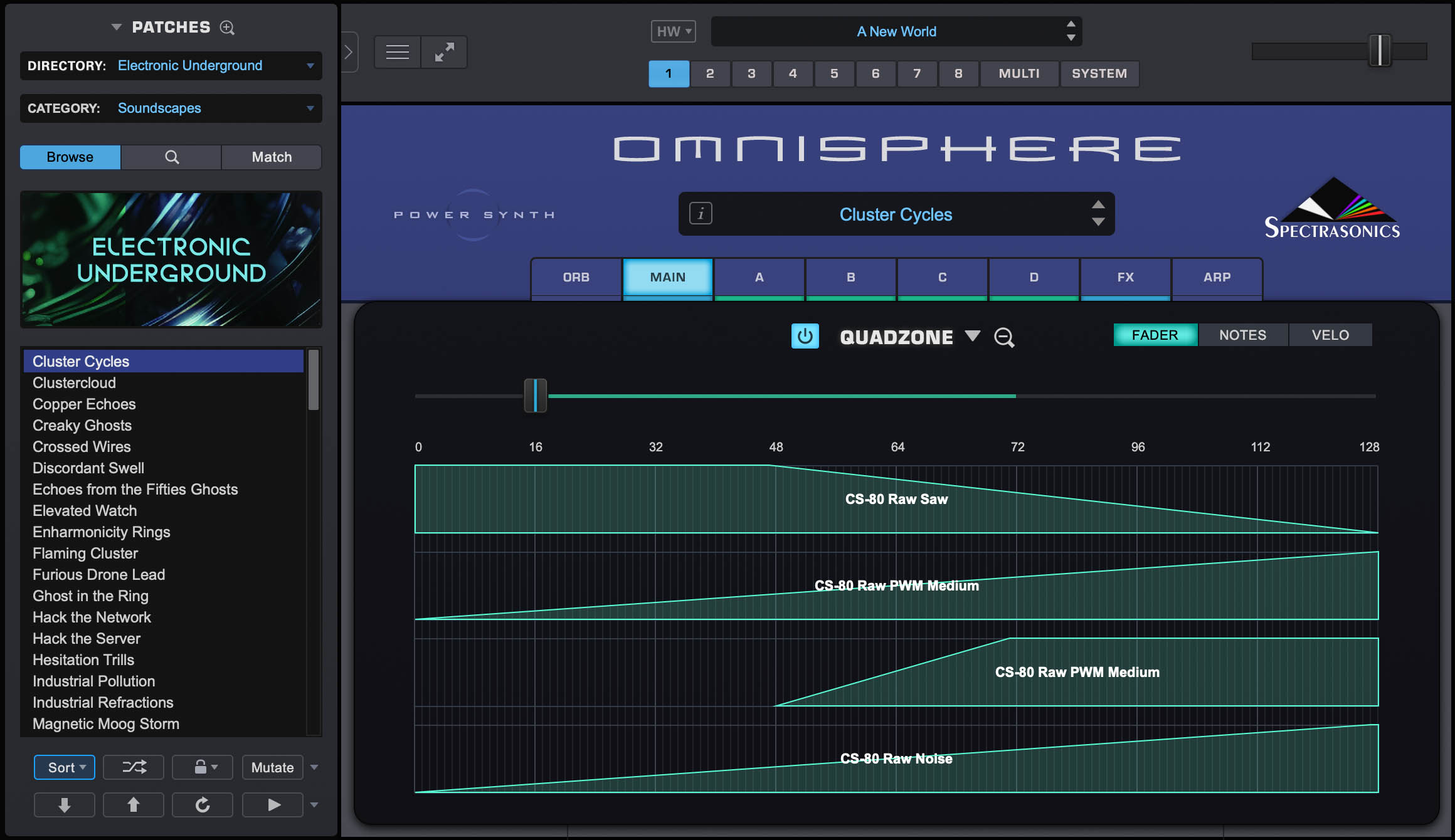
Starting tones
With our eyes turned toward user sound design, we set about creating our own patches. Thanks to the overhauled graphics, this feels marginally easier than in previous versions, enhanced considerably by the substantially increased waveform content.
Just as before, there is a huge mix of initial waves, from modelled subtractive content to large and exotic wavetables. You can engineer elements of saturation and oscillator drift, although we really enjoyed the simplicity of applying modulation, with just a couple of clicks, before fine-tuning modulation amounts. Modulation can also be controlled by hardware, over MIDI, although there has also been considerable extension to the Hardware Integration list, where you can use many recent synthesisers and controllers to control Omnisphere, with seamless integration. It’s a tremendous boon for engineering real-time control with your DAW.
The filter section has also been enhanced, with 36 new filter types. These are also categorised, with low- and high-pass filters modelled on classics such as the Jupiter 8 or Minimoog, along with more unique filters, including band-/notch-pass, and state-variable models too, like those used by Oberheim. The differences between filter models are wide-ranging, and you can move from elegant beauty to rip-roaring aggression very quickly and easily.
All of this is shored up by vast modulation possibilities, supplied by eight LFOs and six envelope generators, all of which can veer into highly complex territory. The on-board sequencer and arpeggiator can also supply step-based modulation capabilities, should you require more control than a random LFO.
One new feature, which directly affects the four oscillator sections, is the Quadzone. At one level, it provides a visual and easy interface to decide where each layer will sit, in terms of range across your keyboard. This is enhanced further through the ability to crossfade each layer, and moreover, it’s exceptionally visual and easy to employ. You can also control the behaviour of the layers through fader control or velocity, where you may only want sounds to play at an upper or lower dynamic level.
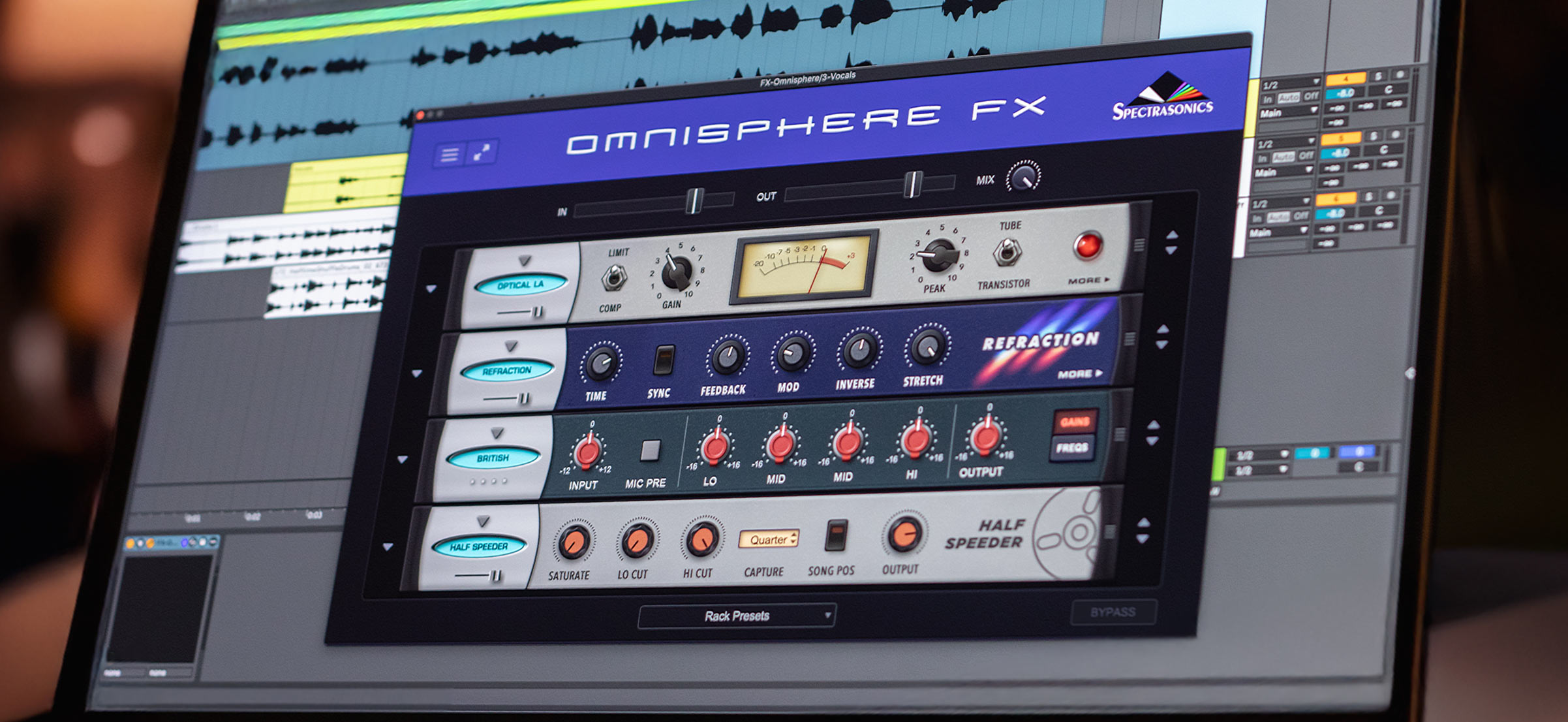
More, more, more…
The effects section has always been an important part of the Omnisphere experience. Many of the patches are pre-laden with effects, with saturation, delays and reverb forming part of the basic construct.
In another substantial overhaul, Omnisphere 3 now includes 35 new effects units, many of which appear familiar, either in name or styling. On the reverb side, four new designs include Super Verb and Solar Shimmer (the names provide the clues), whereas in the dynamics section, you will now find an Optical Levelling Amp, which adopts LA-2 styling, and a more obvious Classic 1176 Limiter.
There are also analogue tape and console saturation effects, and some really unique creative effects such as Pump-o-Matic, which… well, you can guess what that does!
If you have access to an MPE controller, you can take advantage of the enhanced expression capabilities. In our testing with Expressive-E’s Osmose, many of the pad-like patches provided a new layer of playability, although as with all MPE control, it does require a little practice!
One other update, which could easily be ignored, is the inclusion of new portamento curves. This might sound like a small thing, but the differences between companies such as Oberheim, Moog and ARP are fairly pronounced in this area. By way of demonstration, they have even included a patch which perfectly emulates the opening to Quincy Jones’s theme to Ironside, which law dictates must be played on an ARP Odyssey. That was the original, that was the portamento curve, and nothing else will do. Thank you Spectrasonics – that’s a layer of detail that we like… a lot!
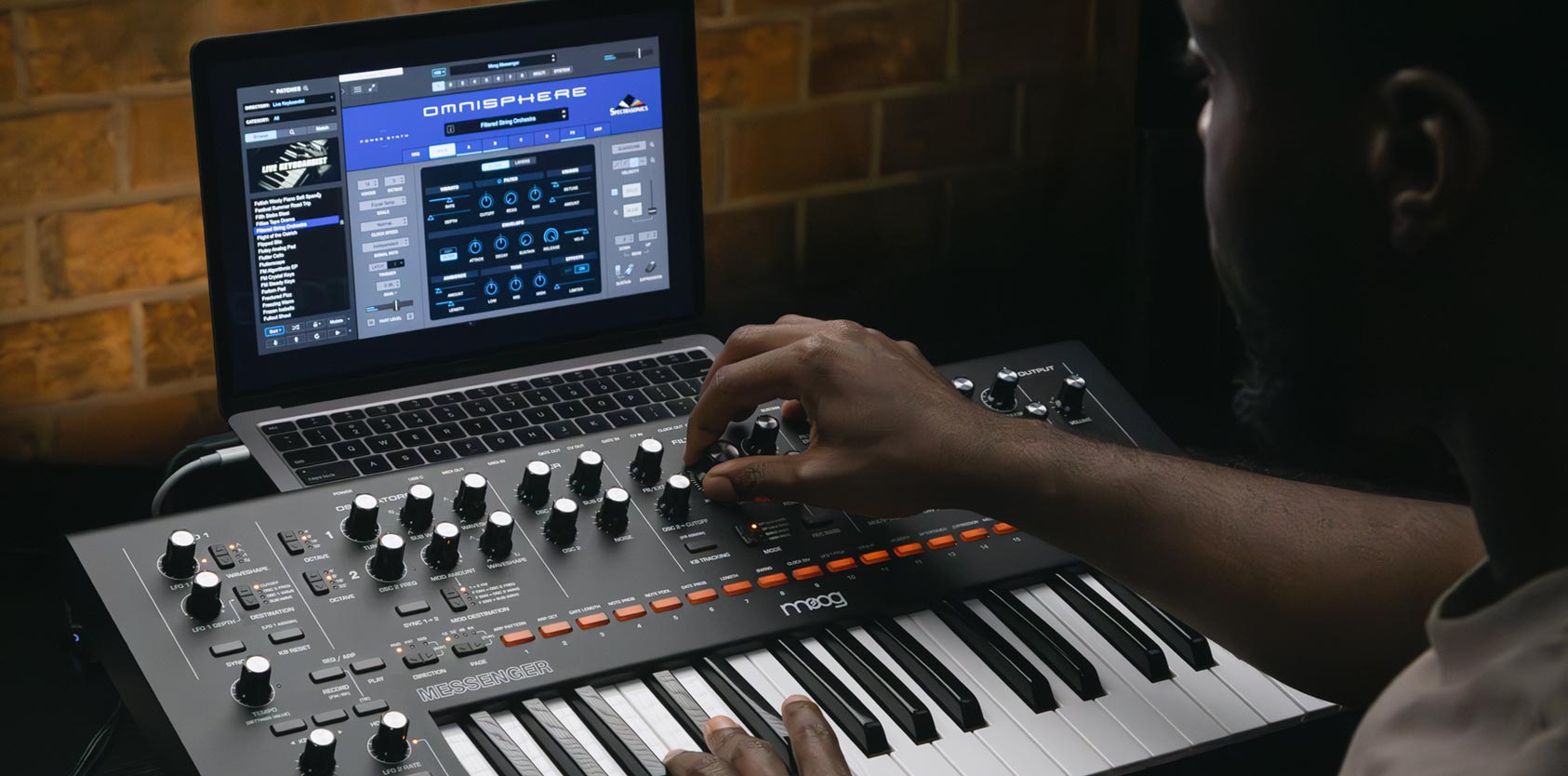
Verdict
So, is Omnisphere 3 a good purchase from new, or a worthy upgrade? On both fronts, it’s a firm “absolutely”! On the face of it, you could be forgiven for thinking that there isn’t an enormous amount of enhancement over Omnisphere 2. There’s actually a lot of hidden enhancement, whether it be the tweak to the graphical front-end operation, or the hidden depths of the substantial number of new original sounds and patches, with the beautifully organised hierarchical menu system. Of course, Omnisphere 3 is also an eight-part multi-timbral synth, so a single instance of the instrument can provide enormous capacity in the context of a project.
However, the overarching element that sets Omnisphere 3 apart from the crowd is its extraordinary sound and usability. It’s no surprise that the package has become a mainstay for soundtrack composers, with acoustic and hybrid content which is incredibly unique and inspiring. If you just want to use or ‘mutate’ the preset patches, you’ll not get bored any time soon, but if you fancy creating your own patches, you can go very, very deep, and it’s a lot of fun to do so, and highly rewarding too!
With an abundance of synthetic content, Omnisphere can quickly morph from subtle to aggressive, lending itself to all forms of modern production. It is quite simply a behemoth that has understandably become a production backbone for so many producers and composers.
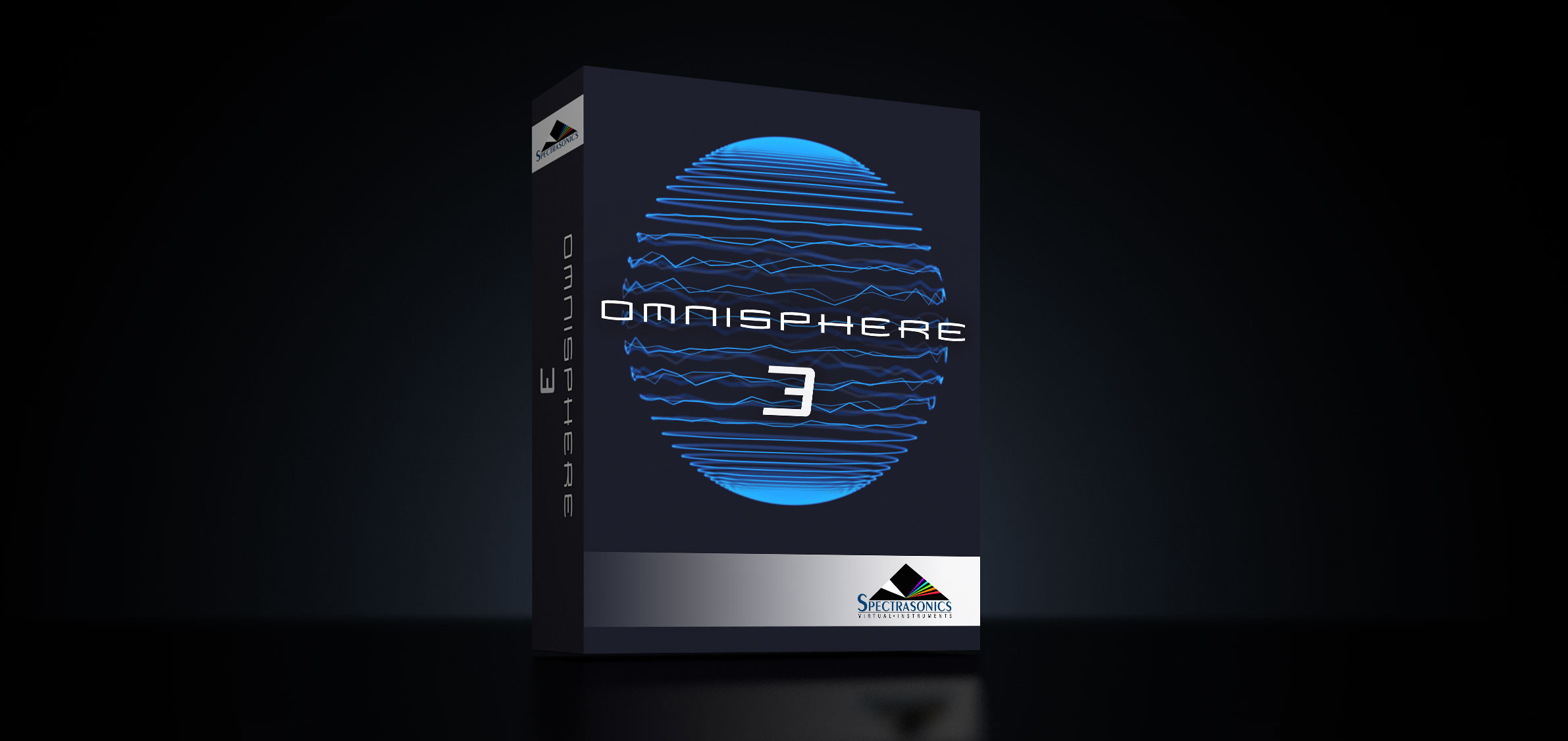
Hands-on demos
SpectrasonicsVIDEO
Alternatives
Zebra has always been a firm favourite for creating complex and unique synthetic and layered sounds. Its modular design invites programming and creativity.
Read the full u-he Zebra 2 review
Serum 2 is often associated with full-on synthetic sounds, ideal for EDM and dance production. It has a visual interface, which allows a deep level of programming.
Read the full Xfer Serum review
The clue is in the name, when it comes to this upgraded version to NI's Massive. Another huge sounding synthesiser, with a clean graphic interface which is easy to control and manipulate.
Read the full Native Instruments Massive X review
Specifications
Price | $499 (upgrade for existing users $199) |
Key features | 18 new library collections Over 41,000 patches included 36 new filter types Vastly-expanded hardware integration Over 600 morphing wavetables included 8-part multi-timbral |
System requirements | Mac or PC : VST2/3, AU, AAX and standalone formats |
Contact |
Roland Schmidt is a professional programmer, sound designer and producer, who has worked in collaboration with a number of successful production teams over the last 25 years. He can also be found delivering regular and key-note lectures on the use of hardware/software synthesisers and production, at various higher educational institutions throughout the UK
You must confirm your public display name before commenting
Please logout and then login again, you will then be prompted to enter your display name.
